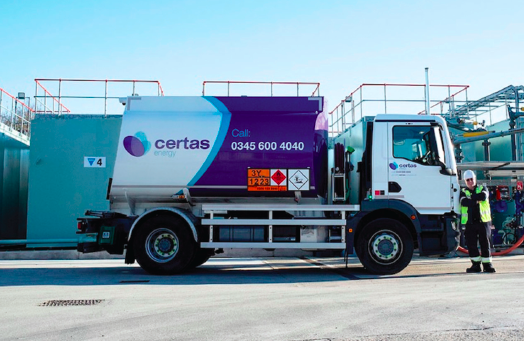
While the efficacy and sustainability credentials of HVO can differ from supplier HVO is being touted as an easy drop-in alternative to diesel, but scepticism remains. Pete Cronin, commercial marketing manager (construction) at Certas Energy, clarifies the fuel’s upside.
In a month that saw the S&P Global construction purchasing managers index (PMI) drop at its fastest pace since the pandemic, leading construction companies that represent both the public and private sector have signed up to the Construction Leadership Council’s (CLC) Five Client Carbon Commitments.
This public commitment from major firms, like the National Grid, to phase out diesel by 2035, among other pledges worth more than £30 billion of investment, highlights the clear and unfaltering direction of travel the industry is going.
Alternatives
Construction is one of the UK’s largest emitting sectors. More than five million tonnes of diesel is consumed annually, and roughly 300,000 non road mobile machinery (NRMM) items that run on diesel are currently used on construction sites. This is why the Zero Diesel Sites Route Map was first developed in June 2023 by the CLC, and it’s why so many firms are currently trialling and transitioning to alternatives to diesel. The current Labour Government has made ‘getting Britain building again’ the cornerstone of this Parliament and main measuring stick for success, and Prime Minister Keir Starmer doubled-down on the country’s net zero commitments at COP29 last year, setting a more ambitious target of an 81% cut in emissions by 2035.
One of the most effective ways construction plant can support this transition, in the short- to medium-term, is by switching to hydro-treated vegetable oil (HVO). Otherwise known as ‘renewable diesel’, HVO is a liquid renewable alternative to diesel, manufactured from 100% renewable raw materials and sustainable waste, and it can produce up to 90% fewer carbon emissions.
Improved combustion
HVO is composed of hydrocarbon molecules with a chemical structure and energy density similar to fossil diesel, meaning that it offers strong low temperature performance up to -30°C. This is a drop-in solution, meaning it does not require any modifications to engines or machinery, and the fuel can be mixed with white diesel, making it a seamless alternative.
Similarly, there is no need to change filters when switching, while extending the life of diesel particulate filters, so engines will experience improved combustion over time compared to certain diesel alternatives.
While the efficacy and sustainability credentials of HVO can differ from supplier to supplier, actions are being taken at both a legislative level (European Commission) and voluntary scheme level (ISCC) to raise the standards across the industry for sustainable and ethical sourcing, and traceability.

Cost coming down
Major firms like Keir Construction have already started to make the switch, with more companies joining every month. According to recent research from Certas Energy, HVO volumes doubled last year, totalling more than half a billion litres, and the market continues to show signs of robust growth.
This trend is expected to continue for the next decade. With more demand will come more supply, and then lowered costs. As it stands today, HVO is roughly 3% more expensive than diesel, and we anticipate the price to keep coming down. We understand that this is a key barrier for many companies that already want to choose sustainable alternatives.
The Construction Plant-hire Association (CPA), representing the voices of almost 2,000 businesses across the country, recently published an open letter to the UK Government about this very issue. It detailed that, while the majority of construction plant companies want to decarbonise their operations, and make a solid contribution to the net zero targets, the lack of government subsidies or growth in the economy have made this prospect even more difficult.
Costs associated with HVO can be reduced in the shorter-term if it is mixed with standard diesel, and if an organisation invests in hiring on-site storage tanks, rather than buying them outright. Certas Energy now offers this buying option nationwide, allowing companies to store HVO on-site for up to 10 years, and bought at preferential rates. For medium- to longer-term cost reductions, however, something more comprehensive is needed.
HVO is limited much like almost every other commodity and energy type is, but its availability is not limited by feedstock. Each year, more investments are made into developing new feedstock pathways to address future supply, such as municipal solid waste and rice husks, and in improvements to feedstock collection techniques, while bio-refining capacity is expected to double by 2038.
Countries must continue to establish collection networks that enforce regulations for the disposal of waste oils and introduce more incentives than the ones provided by the Renewable Energy Directive and RTFO.
With all this in mind, recent reports suggest that consumption on the continent is expected to grow to around 32 billion litres in the next decade, up from just seven billion litres in 2023, and it’s forecasted to grow by more than 400,000 tonnes this year alone.
This is a huge opportunity for the construction and plant industry to play a leading role in this transition. HVO offers a credible way for organisations to take meaningful action on carbon reductions today, rather than waiting for tomorrow’s solutions.








